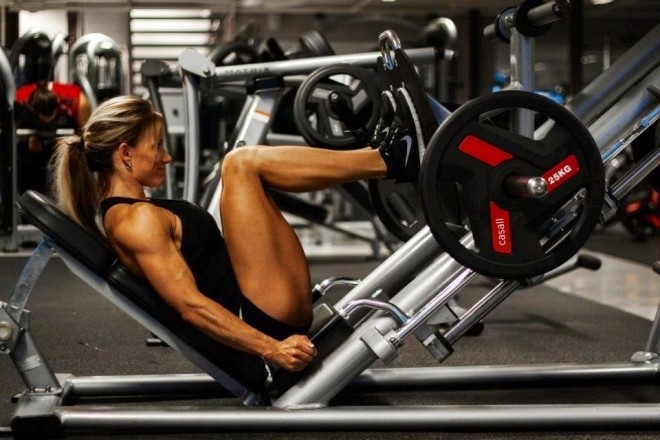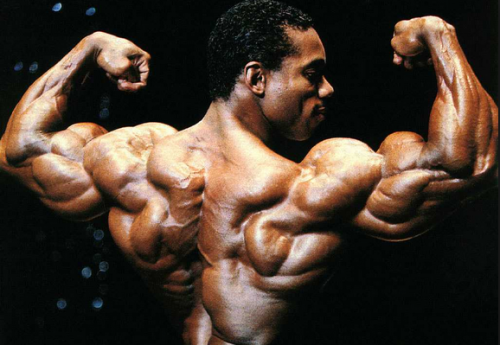Women and muscle mass have a strange relationship, and it’s been that way forever. When you’re trying to decide whether you actually want to put on muscle, it’s a very personal decision that a lot of women eventually choose not to make at all because they don’t want to “bulk up.” Still, a lot of you have told me you want to get stronger, which leads to the following question:
If you want to improve your performance in the gym and get stronger, how do you do it without adding mass you do not want?
After Part I of this series was published, I heard from several women who told me they actually like adding mass. That, I’m happy to say, is an easy fix with this (the Conjugate Method) type of training. I’ll get to this in the second part of this article. First, however, we need to finish off the week with our two other training sessions.
Dynamic Effort Training
Dynamic effort training, also called speed work, is performed to improve the rate of force development (RFD) in a lift. If you walk into a cutting-edge athletic training gym, you’ll notice that some coaches have expensive machines called Tendo units that measure the speed at which their athletes are performing their lifts. That’s because the rate at which you can move the bar has a dramatic effect on strength and athletic performance.
Keep in mind that your dynamic lower and upper days are specifically done with your main lifts in mind: the squat, the bench press, and the deadlift.
 These are performed with lighter percentages (anywhere from 50-80 percent) for lower reps (2-3 per set), with an emphasis on moving the weight as quickly as possible.
These are performed with lighter percentages (anywhere from 50-80 percent) for lower reps (2-3 per set), with an emphasis on moving the weight as quickly as possible.
Keeping your percentages and reps in this low range will keep your overall volume low while improving the efficiency of your nervous system—a concept I covered in Part I of this series. Again, when it comes to strength, it’s not always adding muscle that gets you strong. A huge component of the process involves training your nervous system, too.
After your warm-up, your main set on dynamic day would look something like this:
Dynamic Squats: 8×2 (8 sets of 2) @ 70% of your max (short rest intervals)
As outlined in Part I, your accessory work (everything else you do on this day) will entail all the muscular work you’ll need to improve your lifts. This entails, again, analyzing your weak points and choosing exercises that bring them up to speed.
Sample Week
Putting this entire week together, your training template should look something like this:
Monday: Max Effort Lower Body
Wednesday: Max Effort Upper Body
Friday: Dynamic Effort Lower Body
Sunday: Dynamic Effort Upper Body
Depending on your goals and your schedule, you can modify this template in an infinite number of ways. My clients, both male and female, have experienced great success with this basic form—but if it needs to be changed, it’s highly adaptable.
The Bottom Line
Circling back to the original point here, let’s say you’re a woman who wants to get stronger AND add muscle. Read any muscle magazine, and they’ll advise you to do a higher volume of squats and deadlifts. The problem with this, however, is that sets of 10-15 reps won’t get you to your goal of improving your one-rep max on those lifts. You’ll make progress for a while, but you’ll inevitably stall.
Doing dynamic and max effort work in the way I’ve outlined will get you stronger by training your central nervous system (CNS), but you can still add the muscle mass you’re looking for with your accessory work. If you’re looking for muscle, throw in some leg pressing, lunges, or split squats for higher reps. The same holds true for your upper body movements, too.
This type of training, lately in conjunction with Carb Back-Loading, has done wonders for my strength levels and my body composition. Over the past decade, I’ve utilized these basic outlines to continuously get stronger. Depending on my goals, I can adjust my volume and accessory work accordingly, whether I’m competing in a powerlifting meet (focused on strength gains), or between competitions (focused on recovering, recomposition, leaning out, and training different lifts).









Recent Comments